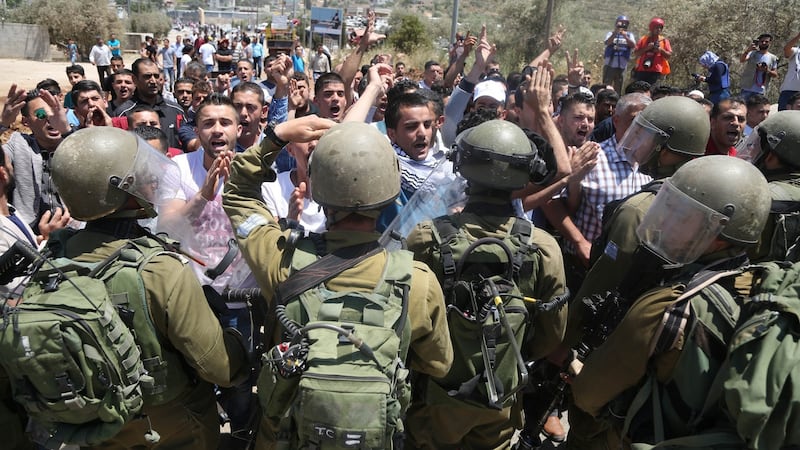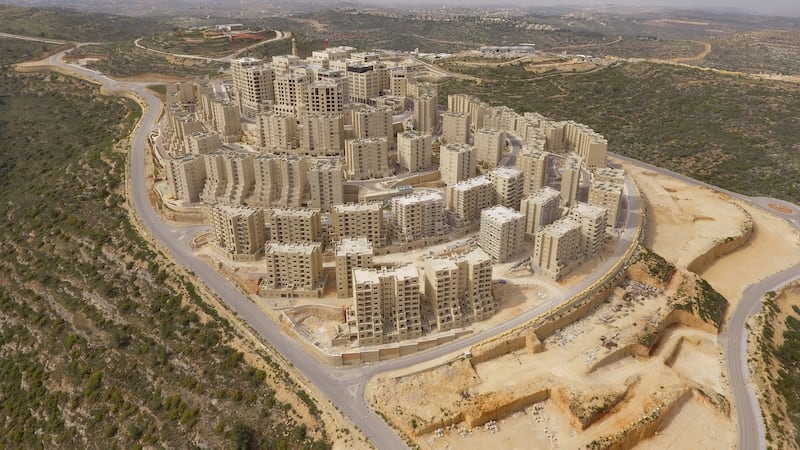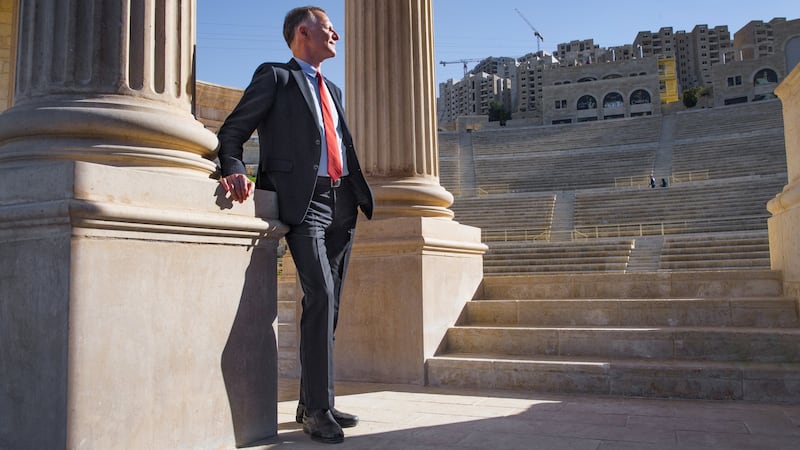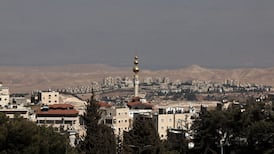As Israel marks the 50th anniversary of its occupation of the West Bank, for a third generation of Palestinians the occupation is the only reality they have known.
Since the 1993 Oslo Accords, the Palestinian Authority has controlled territory comprising 11 per cent of the West Bank – Area A. Area B (28 per cent) is subject to joint Israeli-Palestinian military and Palestinian civil control. Area C (more than 60 per cent) remains under full Israeli control.
The division of the West Bank was meant to last for only five years while the parties worked out the details of a permanent peace agreement and the creation of an independent Palestinian state, but a peace deal remains elusive and no negotiations have taken place for three years.
Israel’s occupation impacts on almost every aspect of daily life for the Palestinians.
Jewish settlements and outposts, and roads built for settlers, necessitated the confiscation of large tracts of West Bank territory. Israeli army roadblocks restrict freedom of movement and access for the Palestinian population.
In 2002, during a wave of suicide bombings, Israel began construction of a separation barrier, ostensibly to keep out Palestinian militants. However the barrier, in parts an electronic fence and in parts a concrete wall, often penetrated deep into the West Bank, prompting Palestinian criticism of a new Israeli land grab.

The barrier is more than 700km long – twice as long as the 1967 Green Line border. Seventy one settlements and 32 Palestinian villages are situated in the so-called Seam Zone, sandwiched between the Green Line and the route of the barrier, Israel’s preferred eastern border if ever a peace deal is clinched.
The Palestinian city of Qalqilya in the northern West Bank, with almost 60,000 residents, is almost entirely surrounded by the barrier, as are numerous villages in the area.
The barrier separates many Palestinians from their land, requiring them to seek permits from the Israeli authorities to work in their fields. Soldiers usually allow the Palestinians to enter and leave their fields only for limited hours each day
The barrier separates many Palestinians from their land, requiring them to seek permits from the Israeli authorities to work in their fields, which are classified as closed military zones. Permission is often limited to certain times of year, such as the olive harvest season, and soldiers usually allow the Palestinians to enter and leave their fields for only limited hours each day.
Plant nurseries
Before the first intifada uprising in 1987, tens of thousands of Israelis used to flock to Palestinian towns and villages for weekend shopping excursions. Such visits are rare today but 12 Palestinian plant nurseries close to the Green Line, just south of Qalqilya, still rely heavily on Israeli customers.
Faisal (45), a father of five from Qalqilya who preferred not to give his full name, is one of 450 local Palestinians who rely on the nurseries to make a living.
“If we don’t return from our fields in the period when the Israelis open the barrier gate they can ban us from entering for two weeks or even a month. Sometimes they only grant permission for the registered landowner even if he is an old man, and not to relatives who actually work in the fields.”
He understands why the Israelis wanted to build a barrier but says they should have built it on their side of the Green Line, not on Palestinian land.
“Israeli leaders have succeeded in creating an image of every Palestinian as a terrorist and our leaders have created the image of every Israeli as a soldier,” he says. “We live in mutual fear.”
The Palestinian village of Kufr Qaddum is situated on the main road between Qalqilya and Nablus, the largest Palestinian city in the northern West Bank.
Israeli troops blocked off the main road out of the village in 2003, citing security concerns, because it passed close to the nearby settlement of Kedumim, built partly on land confiscated from the village.
The closure forced the villagers to make a long detour to travel to Nablus and, despite numerous promises to reopen the road, it remains closed.
Protests held at weekends to have the road reopened have turned the village into a symbol of Palestinian resistance.
The soldiers use tear gas, dogs, rubber bullets, arrests and even foul-smelling skunk water but we won't give in
“The soldiers use tear gas, dogs, rubber bullets, arrests and even foul-smelling skunk water but we won’t give in,” says Saker Obed (61), a father of seven and one of the protest organisers. “My dream is that one day there will be real peace, and Israeli and Palestinian children will live side by side.”
New city
The new Palestinian city of Rawabi, still under construction northeast of Ramallah, stands out in stark contrast to the rest of the West Bank.

For Palestinian-American businessman Bashar al-Masri, the driving force behind the project, the recent opening of the city’s commercial centre was a dream come true. “Ten years ago I dreamed of sitting in a cafe in Rawabi, sipping coffee and watching the shoppers walk past and now this is exactly what I’m doing,” he said.
The Q shopping centre has 18 stores from the world's top fashion brands – previously unavailable for Palestinian consumers, who had to travel to Jordan or Israel for top-level shopping.
We will continue to build the model Palestinian city – hopefully as a step towards the establishment of a model Palestinian state
“Rawabi was built despite the occupation and Israel holding up the water supply and building of a suitable access road,” Masri said. “But we will continue to build the model Palestinian city – hopefully as a step towards the establishment of a model Palestinian state.”
More than 700 families – nearly all young Palestinian professionals – have so far moved to Rawabi, a 20-minute drive from Ramallah, but the city is projected to continue growing and reach a population of at least 25,000. Rawabi is proudly secular although a large mosque is under construction and a Greek Orthodox church will also be built for the city’s 10 per cent Christian population.
Rawabi is unique in two ways: it's the first Palestinian city to be built according to a modern urban design plan and it's also being built entirely by the private sector. Palestinian Authority officials backed the idea of a new city but failed to provide funds, forcing Masri and the government of Qatar, which co-sponsors the project, to finance all the infrastructure normally provided by the state, such as roads, water, sewage and schools.

Israeli delays in providing water and the lack of PA funds means the project, the biggest employer in the West Bank, can only hope to break even at best.
The Rawabi amphitheatre – the biggest in the Middle East with a capacity of 15,000 – features huge images of Marilyn Monroe and Elvis Presley beside Arab singers, in contrast to most Palestinian towns and villages where wall posters show pictures of local militants killed in clashes with Israeli forces.
The young, upwardly mobile couples moving to Rawabi are seeking a better future for themselves and their children, who attend the city’s only school, a private English-language academy. However, for some Palestinians, the very idea of creating a glistening new city in the West Bank hills is only a diversion from the national struggle against the occupation.
THE GAZA STRIP
The Gaza Strip is a narrow belt of land 41km long and 6-12km wide – an area of 365sq km. It remains sealed-off by security fences on the Israeli and Egyptian borders on three sides and on the fourth side by the Mediterranean Sea, which is controlled by the Israeli navy.
More than a half of Gaza’s two million population are refugees.
In 2005, under Israel’s unilateral disengagement plan, all Israeli troops left Gaza after dismantling the 21 Jewish settlements in the Strip, which were home to 8,000 Israelis. However, Israel still maintains control of sea and air access to Gaza and controls all but one of its land border crossings. Rafah is under the control of Egypt, which also imposes strict limits on freedom of movement.
In 2006, the Islamist group Hamas won elections in Gaza and the following year seized power after fighting Fatah forces, effectively creating two separate Palestinian entities. Despite the lip-service calls for Palestinian unity from both sides, the hostility between the Hamas rulers in Gaza and the Palestinian Authority, led by president Mahmoud Abbas and his Fatah movement, is greater than ever.
Last month, in what Hamas officials described as a “dangerous escalation”, the Palestinian Authority announced it would no longer pay for the electricity Israel supplies to the Strip.
Israel and Hamas have fought three wars in the Gaza Strip since 2008.
After the Hamas takeover, Israel declared Gaza a “hostile entity” and swiftly imposed a blockade on the territory, restricting the movement of goods and people in and out. Egypt, meanwhile, blockaded Gaza’s southern border.
In 2010, following international pressure, Israel eased some of the import and export restrictions. Some 10,000 trucks cross from Israel into Gaza each month carrying essential supplies and construction material.
Nearly half of the enclave’s inhabitants live under the poverty line, with 80 per cent surviving on humanitarian aid.
Unemployment is about 45 per cent – one of the highest levels in the world.
A United Nations report has said that, without immediate, massive mobilisation, Gaza will become uninhabitable by 2020.
Monday: Witnesses to the start of the Six Day War recall where they were on June 5th, 1967


















